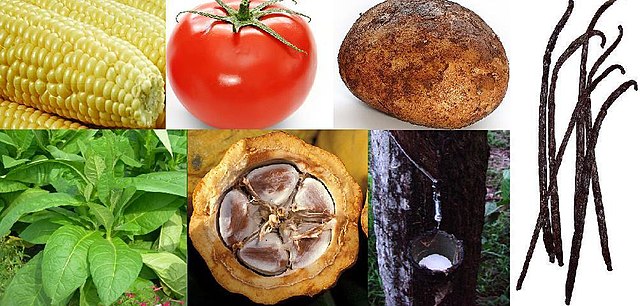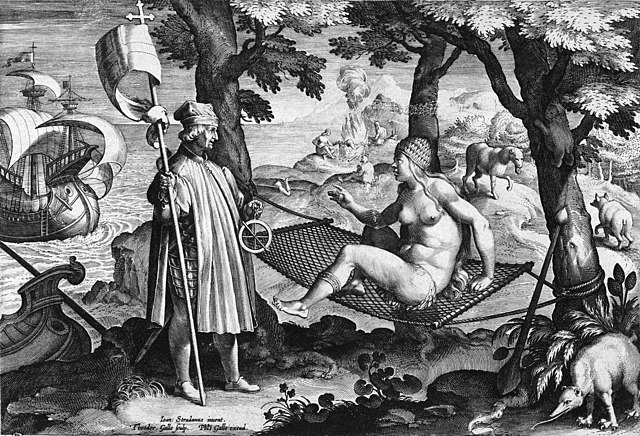The Columbian exchange, also known as the Columbian interchange, was the widespread transfer of plants, animals, precious metals, commodities, culture, human populations, technology, diseases, and ideas between the New World in the Western Hemisphere, and the Old World (Afro-Eurasia) in the Eastern Hemisphere, in the late 15th and following centuries. It is named after the Italian explorer Christopher Columbus and is related to the European colonization and global trade following his 1492 voyage. Some of the exchanges were purposeful. Some were accidental or unintended. Communicable diseases of Old World origin resulted in an 80 to 95 percent reduction in the number of Indigenous peoples of the Americas from the 15th century onwards, most severely in the Caribbean. The cultures of both hemispheres were significantly impacted by the migration of people, both free and enslaved, from the Old World to the New. European colonists and African slaves replaced Indigenous populations across the Americas, to varying degrees. The number of Africans taken to the New World was far greater than the number of Europeans moving to the New World in the first three centuries after Columbus.

New World native plants Clockwise, from top left: 1. Maize (Zea mays); 2. Tomato (Solanum lycopersicum); 3. Potato (Solanum tuberosum); 4. Vanilla (Vanilla); 5. Pará rubber tree (Hevea brasiliensis); 6. Cacao (Theobroma cacao); 7. Tobacco (Nicotiana rustica)
Old World native plants Clockwise, from top left: 1. Citrus (Rutaceae); 2. Apple (Malus domestica); 3. Banana (Musa); 4. Mango (Mangifera); 5. Onion (Allium); 6. Coffee (Coffea); 7. Wheat (Triticum spp.); 8. Rice (Oryza sativa)
Sixteenth-century Aztec drawings of victims of smallpox
A depiction of slaves working at a plantation in Virginia, 1670
The term "New World" is used to describe the majority of lands of Earth's Western Hemisphere, particularly the Americas. The term gained prominence in the early 16th century during Europe's Age of Discovery, after Italian explorer Amerigo Vespucci published the Latin-language pamphlet Mundus Novus, presenting his conclusion that these lands, soon called America based on Amerigo's name, constitute a new continent.
Amerigo Vespucci awakens the sleeping America, a late 16th century illustration depicting Amerigo Vespucci's voyages to the Americas
Historia antipodum oder newe Welt, or History of the New World, by Matthäus Merian the Elder, published in 1631






